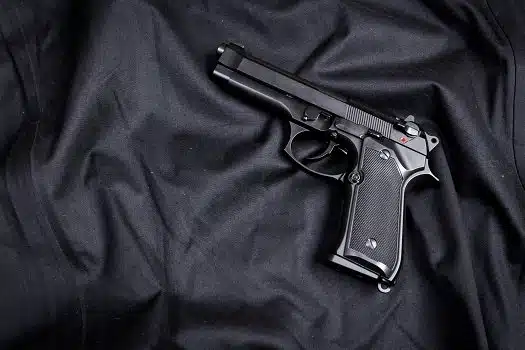Handguns are a popular firearm choice, since the smaller design allows for convenient carrying, concealing, and—when necessary—use. While modern handguns do have some unique design characteristics that vary based on model and make, they all have some basic parts in common. The firearms safety and training experts from Gun Safety Training Pros, your premier choice for gun safety classes, go over these common parts below along with some other components that are also worth mentioning.
Action
The action, or “trigger group,” refers to parts of a handgun responsible for firing cartridges. Handguns can have different types of actions. For instance, a single-action-only trigger is designed to simply release the hammer or striker when the trigger is pressed.
Frame
This is the housing that also acts as the housing or grip for the handgun. The other parts of a handgun are either within it or connected to it in some way. The frame of the handgun is typically the portion that has the serial number and is regulated by the ATF.
Barrel
Made of metal and hollow, the barrel is the passageway for the bullet once the handgun is fired. Barrels on handguns are typically on the short side to allow for single-handed firing in a way that maintains accuracy and control. Barrel-related terms include:
• Breech – The end of the barrel by the firing pin is termed the breech.
• Bore – The inside of the barrel is referred to as the bore.
• Chamber – A cavity at the back end of the barrel or cylinder, the chamber is what holds the cartridge until it’s fired.
• Muzzle – The end part of the barrel on a handgun is the muzzle. This is the very last part of the barrel before the bullet exits.
Other Important Handgun Parts
Now that you have a better understanding of the most common parts that can be found in all handguns, there are some other fairly common components or parts it can also be good to know about. This list includes:
• Cylinder – Revolvers use cylinders, which are located in the space between the barrel and frame, to allow the gun to hold more than one round.
• Removable magazine – Designed to fit in the grip, this is what’s on semi-automatic handguns. This part is sometimes called a detachable box magazine.
• Ejection port – Located along the middle part of the slide, this is a cutout used to remove a shell casing or cartridge that’s spent, misfired, or misfed.
• Hammer/firing pin – Both of these terms refer to the part that causes a handgun to fire when the tension is released.
• Sights – Sights allow you to achieve better aim when firing your firearm. Handguns can have rear and forward sights.
• Slide – This is the entire assembly where the upper section of the handgun is located. It’s typically manually pulled back and often has a ribbed texture to allow the user to do this.
• Slide lock – The purpose of a slide lock is to “lock” or hold the slide in a rearward position. If you have a semi-automatic handgun, this part is engaged after the last cartridge is fired to let you know it’s time to insert more ammo.
One of the most important parts of being a responsible gun owner is knowing how to store, handle, and shoot it properly, which includes understanding its components and how they work. Fortunately, Gun Safety Training Pros offers a high-quality handgun safety class online. If you need to learn how to handle a gun and shoot it safely, we have what you need. For more information, contact one of our knowledgeable team members today at info@GunSafetyTrainingPro.com.



